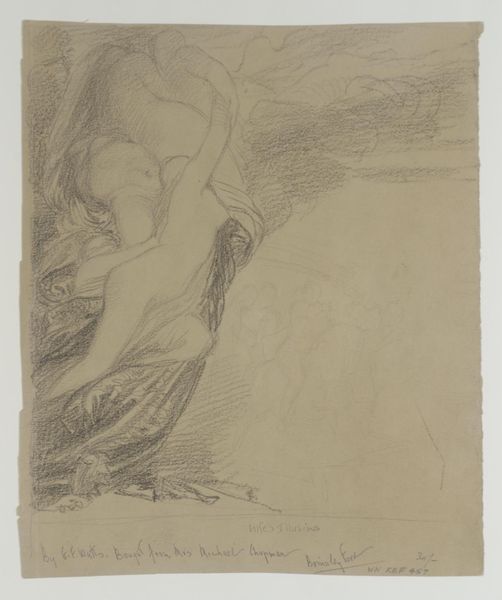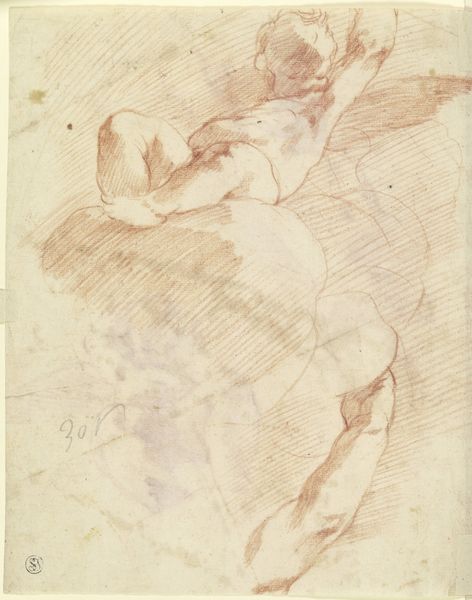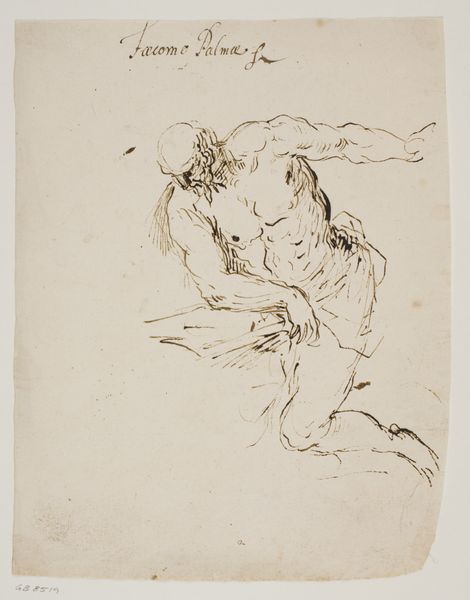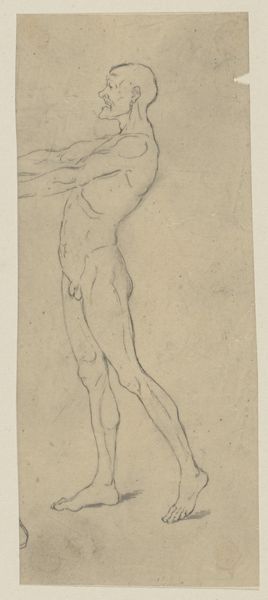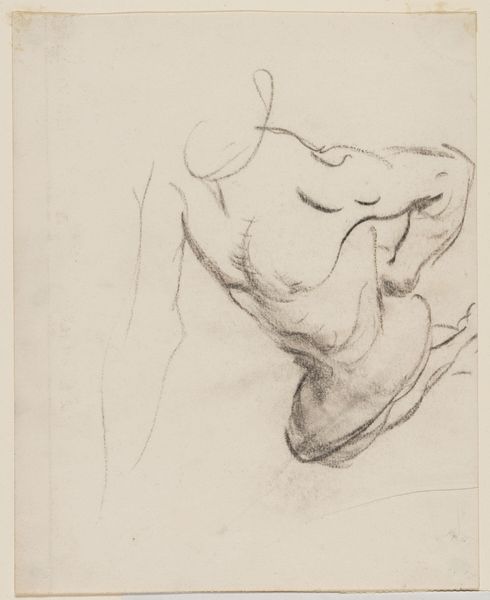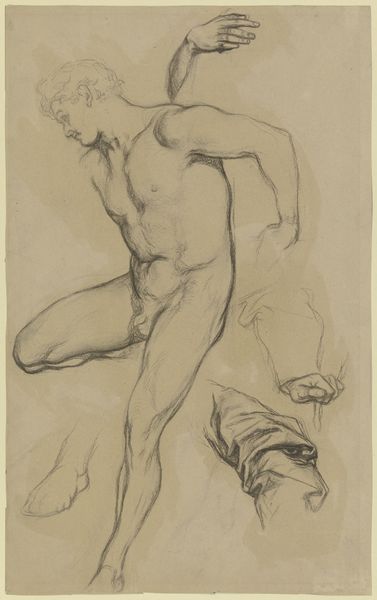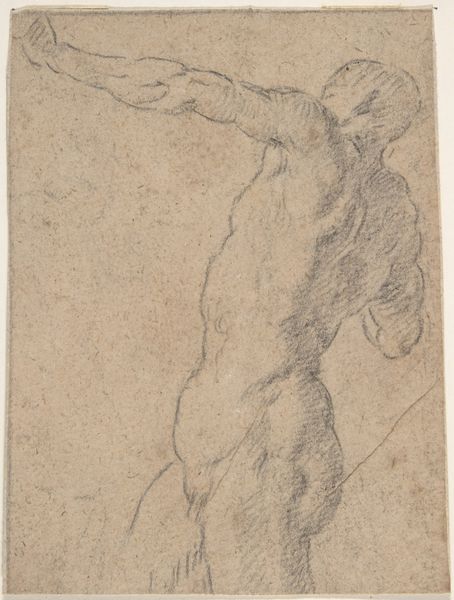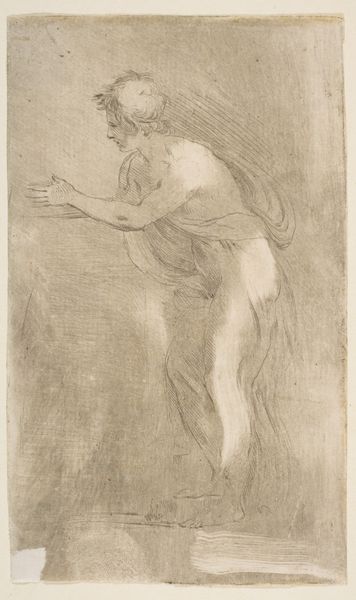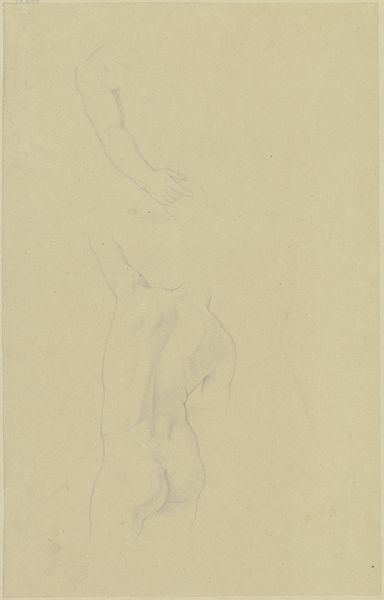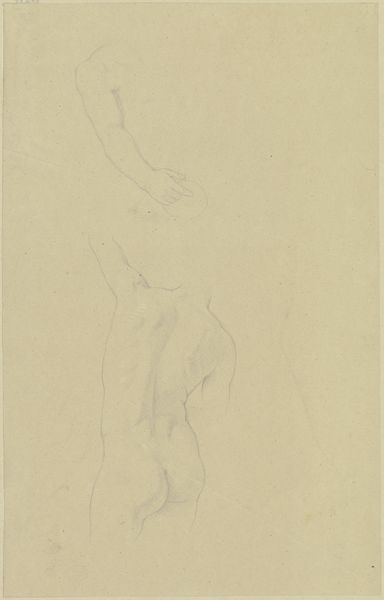
Studies for "Two Classical Male Figures Wrestling" 1919 - 1920
0:00
0:00
drawing, pencil
#
drawing
#
figuration
#
pencil drawing
#
pencil
#
academic-art
#
nude
Dimensions: sheet: 63.5 × 48.1 cm (25 × 18 15/16 in.)
Copyright: National Gallery of Art: CC0 1.0
Curator: This graphite drawing is entitled "Studies for 'Two Classical Male Figures Wrestling'," created by John Singer Sargent between 1919 and 1920. It's a work on paper, a study depicting two nude men in dynamic poses. Editor: Immediately, I see raw strength, both in the figures themselves and in the directness of Sargent's hand. You can practically feel the grit of the pencil on the paper, the layering and smudging so tactile. Curator: Absolutely. What I find striking is how this preliminary study offers a window into Sargent’s artistic process, grappling, one could say, with classical ideals of masculinity and physicality at a time when those concepts were under tremendous social strain. Editor: Precisely, the materiality speaks to that tension. Pencil, a relatively accessible material, grounds these 'classical' figures in the reality of labor – Sargent’s own labor of creation, but also hinting at the unseen physical work required of the models, the athletes themselves. There's no idealization without the sweat, right? Curator: Interesting perspective! It highlights a potential subversion. Instead of a celebration of flawless form, this study emphasizes the human effort required to achieve such a vision, thereby critiquing the inherent exclusions embedded within those classical ideals, particularly regarding marginalized bodies and forms of labor. Editor: The academic nature also seems to push toward how we perform and come to learn male strength, an education of muscle, pose, and control; less inherent than produced through culture and its institutions. Curator: Agreed. Considering its creation in the aftermath of World War I, one might interpret this work as reflecting a world grappling with profound societal shifts and questioning previously held norms and certainties regarding traditional notions of strength, gender and power. Editor: The image embodies a dynamic tension in form and function as Sargent’s line renders power as well as the materials utilized during its realization and the labor needed to manifest its idealization. Curator: Seeing it through your perspective truly deepens the historical weight and gives a modern understanding of this powerful preliminary exercise. Thank you.
Comments
No comments
Be the first to comment and join the conversation on the ultimate creative platform.

